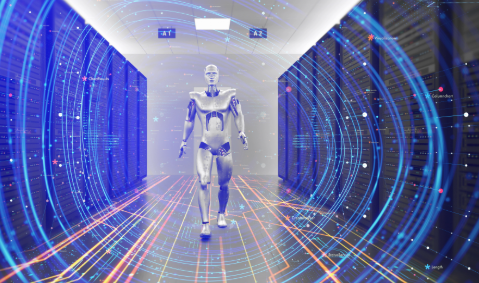
The year 2024 marked a turning point for artificial intelligence, fueled by advancements in hardware that powered its rapid adoption across industries. Tech giants such as Nvidia, Google, and Apple took center stage, redefining the possibilities for AI integration into everyday life and corporate strategy.
Apple’s AI Surge
Apple saw a significant shift in its approach to artificial intelligence, sparking a 16% rise in its stock in late 2024. The company announced plans for AI-enhanced iPhones, featuring smarter Siri capabilities and advanced photo editing tools. These innovations signaled a departure from Apple’s traditionally cautious stance on emerging technologies. Wall Street responded enthusiastically, with analysts predicting that AI-driven features would fuel the next wave of consumer electronics spending.
Meta’s Wearable Vision
Meta Platforms unveiled its most ambitious hardware project since its Quest VR headsets: AI-powered Ray-Ban smart glasses. CEO Mark Zuckerberg positioned the wearables as a potential replacement for smartphones, combining augmented reality with AI to integrate digital information seamlessly into users’ daily lives. For Meta, the glasses represent a bid to redefine personal computing, a chance to capture a market it missed during the smartphone era.
Google’s Technological Leap
Alphabet, Google’s parent company, made headlines with the release of Gemini 2.0, its most advanced AI model. The company also demonstrated its hardware expertise with the Trillium AI chip and the Willow quantum processor. These developments sent Alphabet’s stock to record highs, as investors recognized its potential to bridge AI and quantum computing. Unlike rivals focused on consumer applications, Google’s innovations promise to reshape industries ranging from cloud computing to autonomous systems.
Nvidia’s Industry Dominance
Nvidia strengthened its leadership in the AI sector with groundbreaking hardware. Its Blackwell B100 and B200 GPUs elevated generative AI capabilities, while the Jetson Orin Nano Super Developer Kit, priced at $249, democratized AI development for smaller enterprises. Nvidia’s expanding partnerships in healthcare and automotive underscored its influence in deploying AI across critical sectors, further solidifying its role in high-performance computing.
AI Beyond Silicon Valley
The AI revolution extended beyond tech hubs, with defense firms like Palantir Technologies and Anduril Industries applying AI to modernize military logistics and infrastructure security. These collaborations highlighted the growing reliance on Silicon Valley expertise to address national challenges, from organizational efficiency to defense innovation.
Corporate America also embraced AI as a core strategy. Companies revamped R&D budgets to prioritize AI, while chipmakers retooled production for AI-optimized designs. This shift created competitive pressures across industries, rewarding firms with clear AI roadmaps and punishing those lagging behind.
Transformative Impact Across Industries
AI’s influence extended across sectors, from healthcare to manufacturing. In medicine, AI-assisted systems began aiding diagnosis and treatment planning. Financial institutions deployed AI for risk management and fraud detection, while manufacturers optimized supply chains and equipment maintenance using AI-driven insights.
By the end of 2024, AI had transitioned from experimental technology to a foundational element of corporate strategy. Companies no longer asked if AI would transform their business but focused on how to harness its potential.
Looking Ahead to 2025
As 2025 begins, the challenge lies in translating AI advancements into sustainable growth. Yet, one certainty remains: AI has moved beyond the realm of hype to become the driving force of modern technological innovation. Mastery of AI will likely determine the next decade’s leaders in global business and technology.




